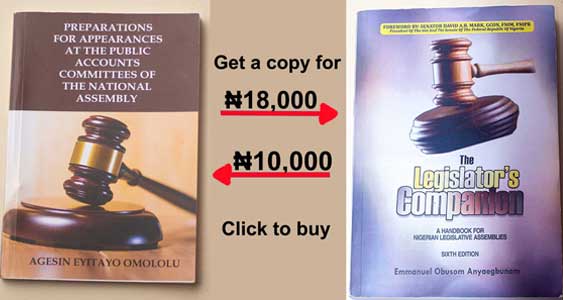Corruption is not just in Nigeria, it has spread to almost all countries of the world.
Though developing countries rate poorly in corruption indices, these indices also show that more than two-thirds of the countries worldwide suffer significantly from corruption including half the G20 (i.e., Argentine, Australia, Brazil, Canada, China, France, Germany, India, Indonesia, Italy, Japan, Republic of Korea, Mexico, Russia, Saudi Arabia, South Africa, Turkey, the United Kingdom, the United States, and the European Union).
The Author of Arthasastra, Prime Minister Kautilya Chanakya of the Mauryan Empire, discussed corruption in his book over 2000 years ago, meaning that corruption dates beyond recent history.
Corruption has been described in many ways which is why an expert Gary Scanlan said that because corruption is like the nature and appearance of the elephant, people try to say what it is but without success. To appreciate this discussion, two definitions-one by Arthur Agwuncha Nwankwo and the other by Bolaji Akinyemi would be considered.
Akinyemi defined corruption as the acquisition of what one is not entitled to. To Nwankwo, corruption occurs when a person in a position of trust and responsibility fails to abide by norms thereby suppressing the rules to promote personal interests at public expense.
From the definitions offered by these notable scholars, it is clear that corruption requires an opportunity, motive, and justification to take place. If one reflects on the wordings of the definitions, the conditions necessary to breed corruption are satisfactorily met. In fact, the opportunity to carry out a corrupt act abound in the course of administration.
The motive, as well as justification for committing acts of corruption, is driven by the “intrinsically” inherent nature of man to continually amass affluence. This situation in my view, explains Nigeria’s Corruption Perception indexes for the last 5 years-136th, 136th, 144th, 146th and 149th.
Although corruption seems to prevail in public life, Nigeria’s National Assembly stands out as an institution saddled with the role of a“watchdog.” For instance, Section 80 of the Constitution of the Federal Republic of Nigeria [CFRN] 1999 (as amended) grants the National Assembly the “powers and control over public funds.”
Remember the popular maxim of “he who pays the piper calls the tune”? Asides from its budgeting function provided in Section 81 (1), Section 88 (1) enables the National Assembly to perform the “watchdog” task of supervision.
To further demonstrate the “watchdog” responsibility vested on the National Assembly, Section 89 (2) (b) is clear on its mandate to expose corruption, inefficiency, or waste in the execution or administration of laws within its legislative competence, and the disbursement or administration of funds appropriated by it.
Before this provision, is the stipulation that permits the Houses to regulate their procedure (Section 60).
The ability to take charge of its processes provides the basis for Section 62 (1)-a stipulation that the affairs of either House could be managed by a committee appointed by it. Drawing from this, a special place exists for committees in pursuing anti-corruption objectives within the ambit of the legislature’s traditional roles of lawmaking, oversight, and representation.
The picture now painted is that though the National Assembly has a role to play in the anti-corruption drive of the government, it does so using a manageable number of its members called committees. Committees examine issues more closely than the whole house will because of their relatively small-sized nature.
There are a total of 177 legislative committees in the National Assembly (108 in the House of Representatives and 69 in the Senate). Juxtaposing this number and the seeming frequent committee activities with the 2020 Corruption Perception Index (CPI) where Nigeria is ranked 149 out of 180 countries, for instance, the effectiveness or rather, the ineffectiveness of legislative committees comes to the fore. This has often been attributed to inadequate funding of committee activities, lack of cooperation from government agencies, etc.
Specifically, one wonders about the use of 120billion, 115billion, 125billion, 139.5billion and 128billion, and 128billion approved estimates for the National Assembly in 2015, 2016, 2017, 2018, 2019, and 2020 Appropriation Acts respectively.
Also, the inclusion of the National Assembly’s allocation as a first-line charge lays to rest the argument of the inadequate release of funds given the almost absence of interference in budgetary releases.
Given the above, I would conclude by suggesting that the National Assembly owes itself and the nation a “moment of legislative introspection” if it indeed desires to add value to the fight against corruption.
Note:
First-line charge are deductions made from the Federation Account arising from the declaration made by the Federal Accounts Allocation Committee (FAAC)
Corruption Perception Index (CPI) ranks countries by their perceived levels of public sector corruption
Legislative Discourse by Ani Jude Okafor
Parliamentary Research Consultant
08039362166, 08128078865



